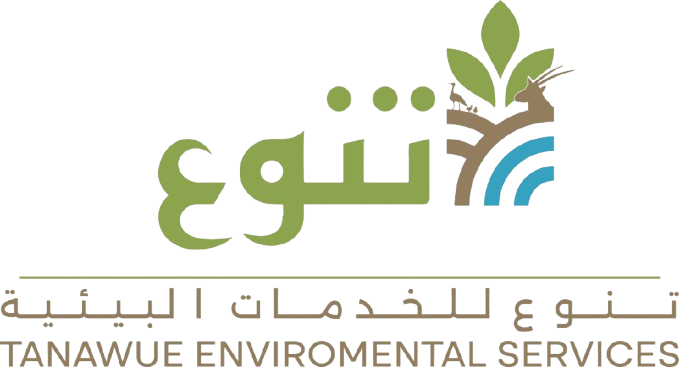Reintroductions
.
At TanawuEnviro, our Reintroductions service is a key component of our commitment to wildlife conservation in the UAE. The process of reintroducing species back into their natural habitats is vital for restoring ecosystems and maintaining biodiversity. We focus on carefully planned and scientifically driven reintroductions to ensure that species previously lost from the wild can re-establish stable, self-sustaining populations.
Our reintroduction programs target endangered or locally extinct species, working in collaboration with wildlife reserves, national parks, and conservation partners to return these animals to environments where they can thrive.
Key Aspects of Reintroductions:
1. Species Selection and Feasibility Studies
Before any reintroduction can take place, a detailed feasibility study is conducted to assess the suitability of reintroducing a species into its natural habitat. Our team evaluates ecological conditions, habitat quality, and potential risks to ensure the success of the reintroduction.
- Habitat Assessment: We assess the availability of food, water, and shelter, as well as potential threats from predators or human activities.
- Species Suitability: Only species that have a high likelihood of adapting and thriving in their former habitats are selected for reintroduction.
- Environmental Impact: We consider the potential impacts of the reintroduction on local ecosystems, ensuring a positive outcome for biodiversity.
2. Preparation for Reintroduction
Once a species has been selected and the habitat prepared, we begin the process of pre-release conditioning. This step ensures that the animals are physically and behaviorally ready for life in the wild.
- Behavioral Conditioning: Animals are trained to develop survival skills such as foraging, hunting, and avoiding predators, using controlled environments that mimic natural conditions.
- Health Screening: Comprehensive veterinary care is provided to ensure animals are free of disease and in optimal health before reintroduction.
- Acclimatization: Animals are slowly acclimatized to the outdoor conditions of their new habitat, helping them adjust to environmental changes.
3. Reintroduction Process
When the animals are ready for release, the reintroduction process begins. This involves a carefully monitored release into their designated natural habitat.
- Soft Release: In some cases, animals may be gradually introduced into the wild through a process known as a soft release, where they are kept in temporary enclosures before full release. This helps them adapt to their surroundings with minimal stress.
- Direct Release: For species that do not require soft release, a direct release into the wild is performed. Our team monitors the animals closely to ensure they acclimate properly.
4. Post-release Monitoring and Support
Monitoring released animals is critical to ensure they adapt successfully to their new environment and that the reintroduction has the desired impact on local biodiversity.
- GPS Tracking: We use tracking collars and satellite tags to monitor the movement, behavior, and survival of reintroduced animals.
- Long-term Monitoring: Ongoing surveillance is maintained to study the animals’ integration into the wild, including their reproductive success and overall health.
- Support and Habitat Management: We provide continued habitat management, such as supplementing food or water resources in critical times, to support the newly reintroduced species.
5. Community and Stakeholder Engagement
Successful reintroduction programs require the support and involvement of local communities, government agencies, and conservation organizations. We work closely with all stakeholders to ensure the success and sustainability of our reintroduction projects.
- Public Education: Engaging the local community in understanding the importance of reintroducing species and fostering positive attitudes toward wildlife conservation.
- Collaborative Partnerships: Working with conservation partners to share data, resources, and expertise for a holistic approach to species recovery.
- Legal Compliance: Ensuring all reintroduction programs comply with UAE environmental regulations and international conservation standards.
Why Reintroductions Matter?
Restoring Ecosystems
Reintroducing species to their natural habitats helps restore ecological balance. Many species play crucial roles in their ecosystems, such as predators controlling prey populations or herbivores shaping vegetation patterns.Increasing Genetic Diversity
Reintroduction of species from captive populations helps boost the genetic diversity of wild populations, which is essential for their long-term survival and adaptability.Preventing Extinctions
By reintroducing species that are at risk of extinction, we contribute to global efforts to preserve biodiversity and prevent the loss of important species.Promoting Sustainable Conservation
Reintroductions not only restore individual species but also help rebuild entire ecosystems, creating sustainable habitats that benefit a wide variety of wildlife.
Species Targeted for Reintroductions:
In the UAE, TanawuEnviro focuses on species that are native to the region and that play a critical role in maintaining ecological balance. Some of the species we work with include:
- Arabian Oryx: Once extinct in the wild, the Arabian Oryx is one of the most successful reintroduction stories, and we continue to support their recovery.
- Sand Gazelle: Reintroducing this species helps restore the desert ecosystems of the UAE.
- Raptors and Birds of Prey: Reintroduction of native birds of prey supports healthy ecosystems by controlling prey populations.
Our Reintroductions Process:
Assessment and Planning
A comprehensive assessment is conducted to determine the feasibility of reintroducing a species, taking into account the habitat, potential threats, and the long-term sustainability of the population.Habitat Preparation
The habitat is carefully prepared to ensure it meets the ecological needs of the species, including securing sources of food, water, and shelter.Pre-release Conditioning
Animals undergo a period of conditioning to help them adapt to the natural environment, including learning how to forage and avoid predators.Release and Monitoring
The animals are released into their natural habitat, and continuous monitoring ensures that they are adapting well and integrating successfully into the ecosystem.
